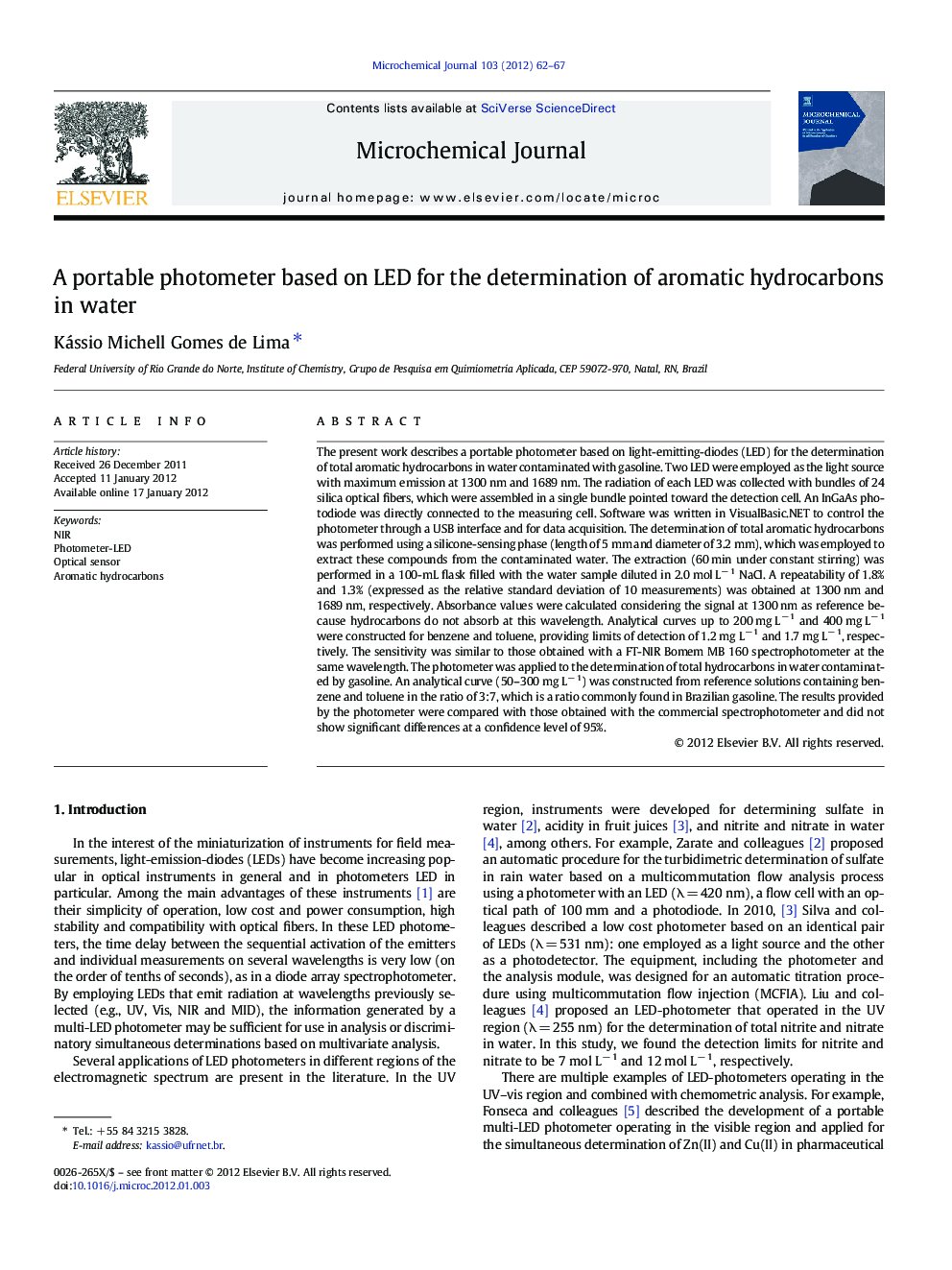| Article ID | Journal | Published Year | Pages | File Type |
|---|---|---|---|---|
| 7644464 | Microchemical Journal | 2012 | 6 Pages |
Abstract
The present work describes a portable photometer based on light-emitting-diodes (LED) for the determination of total aromatic hydrocarbons in water contaminated with gasoline. Two LED were employed as the light source with maximum emission at 1300 nm and 1689 nm. The radiation of each LED was collected with bundles of 24 silica optical fibers, which were assembled in a single bundle pointed toward the detection cell. An InGaAs photodiode was directly connected to the measuring cell. Software was written in VisualBasic.NET to control the photometer through a USB interface and for data acquisition. The determination of total aromatic hydrocarbons was performed using a silicone-sensing phase (length of 5 mm and diameter of 3.2 mm), which was employed to extract these compounds from the contaminated water. The extraction (60 min under constant stirring) was performed in a 100-mL flask filled with the water sample diluted in 2.0 mol Lâ 1 NaCl. A repeatability of 1.8% and 1.3% (expressed as the relative standard deviation of 10 measurements) was obtained at 1300 nm and 1689 nm, respectively. Absorbance values were calculated considering the signal at 1300 nm as reference because hydrocarbons do not absorb at this wavelength. Analytical curves up to 200 mg Lâ 1 and 400 mg Lâ 1 were constructed for benzene and toluene, providing limits of detection of 1.2 mg Lâ 1 and 1.7 mg Lâ 1, respectively. The sensitivity was similar to those obtained with a FT-NIR Bomem MB 160 spectrophotometer at the same wavelength. The photometer was applied to the determination of total hydrocarbons in water contaminated by gasoline. An analytical curve (50-300 mg Lâ 1) was constructed from reference solutions containing benzene and toluene in the ratio of 3:7, which is a ratio commonly found in Brazilian gasoline. The results provided by the photometer were compared with those obtained with the commercial spectrophotometer and did not show significant differences at a confidence level of 95%.
Related Topics
Physical Sciences and Engineering
Chemistry
Analytical Chemistry
Authors
Kássio Michell Gomes de Lima,
